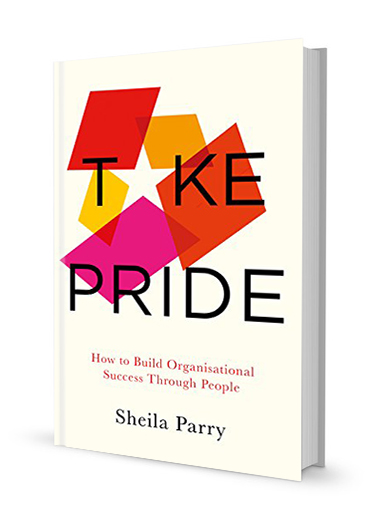The PRIDE Model is built on two key principles.
Firstly, recognising the power of the individual to have an impact, to affect change, it looks at life at work from the dual perspective of the organisation and the people that work there. Nothing happens at work unless the employees turn up, physically and mentally, and so the PRIDE Model consciously places them and their interests on a par with those of the organisation.
Secondly, it places equal value on technical skills and emotional intelligence. If you want to build pride in your organisation and to see colleagues taking pride in their roles, you need to appeal to both rational and emotional incentives. People and organisations are successful when they are led by a well-rounded team and so leaders are encouraged to get to know and care about the people who work for them.
“People who apply the PRIDE Model will create an authentic and energetic workplace where people understand and share purpose and direction, where they want and are able to contribute, and also where they have evidence that they are valued.”
There is a compelling business case for pride at work – pride in oneself and pride in one’s organisation lead to better personal and collective performance. People with pride will make more effort, make better decisions, forge better relationships with their customers and become more positive influencers on their colleagues. They will also take more care of their own and their organisation’s reputation. People with pride are generally happier and healthier. They are more confident in their own abilities, are more fulfilled and are less likely to suffer from stress.
Take Pride is for leaders and influencers who want work to be a great place for the majority, not the minority, and who are looking for a fresh approach to make it happen.
An authentic statement of purpose creates emotional connections between brands and customers; between institutions and people; and it creates meaning for employees at work.
It may be inherent to your organisation, or it may be a higher ideal that you seek to achieve alongside your business goals. But it is not enough to think that organisational purpose alone creates meaningful work. The motivation of individuals is an interwoven strand that drives people to achieve things for themselves and for others. It impacts how much effort they put in and how they relate to their work. When fulfilled, it can carry them further and deeper into a positive relationship with their work.
Most companies realise that their reputation can make or break them, and that employees are an integral part in the equation. Fewer companies really consider the impact of their corporate reputation on their existing and potential employees.
The employer brand arena is dominated by a handful of organisations, who recognise the power of the employee voice in employee attraction and reputation management. Most employers are way behind in terms of realising the power of employee advocacy from the inside out and thus creating a brand story that delivers more effective recruitment and retention.
The inner truth, or integrity of your brand promise is the central piece of the PRIDE model, and it should at the very least meet the expectations set by your employee brand proposition.
Think employee experience from recruitment through to retirement as a framework, but don’t forget to add the dimension of their every day interaction with colleagues on your premises. Culture, values and behaviours are the real-life demonstrations of policies, standards and processes and every individual person contributes to the whole. The larger your organisation, the longer the chain of interactions, and line managers are key to making work a great place to be. They need to be givers not takers, motivators not judges, and ultimately driven by the success of their teams.
Clear and visible direction, and a sense of contributing to a future goal, is a huge factor in employee engagement. This is often expressed in terms of vision and strategy, where is an organisation going and how will it get there; but it also needs to articulate what employees need to do to contribute.
Leaders should be well versed in providing the line of sight between a goal and a task, but to truly resonate they need to consider their employees’ direction of travel as well, what life-stage they are at, and where they are in their own skills development. It is vital to set direction but also to know how far and how fast people are able and willing to come with you.
While the life expectancy of the average business is falling – companies generally are changing more rapidly, brands are coming and going – and it takes more energy to survive and thrive. Energy encompasses the physical, mental and indeed spiritual health of your company and its people.
Operational health, premises, flexible working and space for creative thought will build longevity, sustainability and stamina. People who are inspired will give their best and be in the flow. At the same time, individual health and wellbeing is a massive economic issue. We are not only living longer but we are working longer too. Organisations need to nourish all their employees, but anticipate the fact they will need to accommodate a more multigenerational workforce than in the past, and that might mean some smarter, more flexible working patterns.
